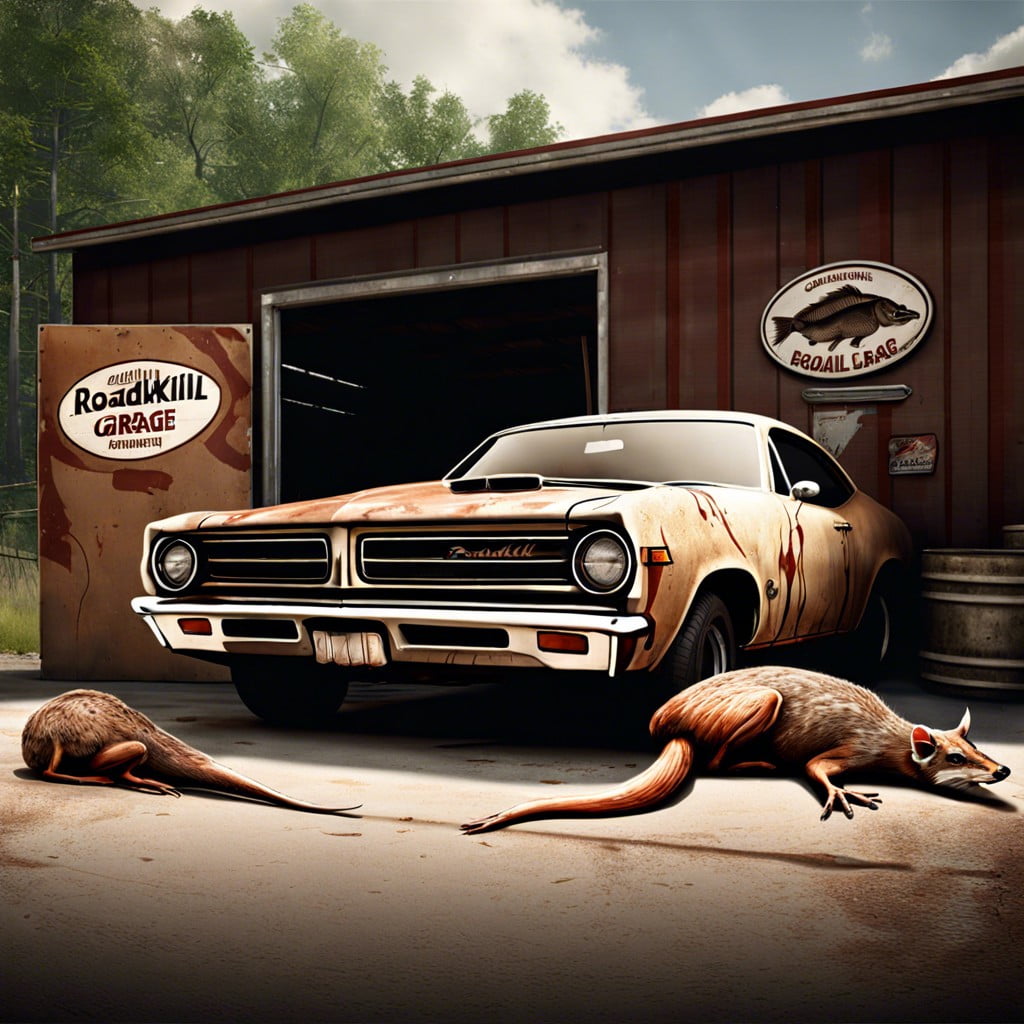Discover where the popular series “Roadkill Garage” is filmed and learn more about this unique filming location.
Key takeaways:
- Roadkill Garage is filmed in Duluth, Minnesota.
- The garage layout is organized chaos with dedicated areas.
- Vintage signs and automotive nostalgia set the vibe.
- The garage is equipped with diverse tools and equipment.
- Local regulations impact garage operations and safety.
Background of Roadkill Garage

Roadkill Garage is a spin-off of the popular MotorTrend show, Roadkill, featuring hosts David Freiburger and Mike Finnegan. The series extends the automotive mayhem of its parent show by focusing on restoring and modifying neglected cars in a workshop setting. Known for its humor and a laid-back approach, the garage embodies the spirit of turning disheveled clunkers into drivable, entertaining vehicles. This setting provides an ideal backdrop for the hosts’ adventures, blending mechanical insights with roadside rescues and timed challenges.
Geographic Location of the Garage
Nestled in the quiet town of Duluth, Minnesota, the garage offers a strategic location that mirrors its quirky and innovative vibe. The colder climate often plays a fun cameo in episodes, testing both equipment resilience and host resilience to chilly breezes. Being away from bustling city centers allows the crew freedom to commit all those pleasantly noisy, greasy car activities without complaints from neighbors. Additionally, the proximity to open roads is perfect for those spontaneous test drives, especially when a newly restored beast needs stretching its legs—or wheels! Duluth’s scenic backdrop, with its vast expanses and open roads, not only provides functional space but also sets the stage for some visually stunning test runs.
Layout and Setup of the Roadkill Garage
The layout of Roadkill Garage reflects a blend of organized chaos and automotive nostalgia. Here’s what sets it apart:
The garage is divided into distinct areas dedicated to specific tasks. There’s a teardown zone, a build area, and a testing space, ensuring a smooth workflow despite the ongoing projects.
Storage plays a key role in the garage’s setup. Wall-mounted racks and labeled bins help in quickly spotting parts and tools, crucial for speeding up the build process. Efficiency is king!
Visually, the place is a treasure trove of vintage signs and old-school automotive paraphernalia, providing not just a workspace but a vibe of a bygone era that complements the rugged charm of the Roadkill projects.
Bright lighting and wide-open doors aren’t just practical choices; they make viewers feel like part of each grease-filled adventure, right from the comfort of their homes. In essence, the setup is as much about function as it is about inspiring gearheads everywhere.
Tools and Equipment Featured in the Garage
The Roadkill Garage is a paradise for gearheads, equipped with a diverse array of tools that make any auto repair enthusiast’s heart race. Anchored by a heavy-duty car lift, the space allows for easy access to vehicles’ undersides for repairs and modifications. Surrounding the lift, a well-stocked array of hand tools, including wrenches, hammers, and screwdrivers, ensures that no bolt is left unturned.
Pneumatic tools play a significant role here, speeding up tasks that manual tools could take forever to complete. An air compressor hums in the background, ready to power anything from impact wrenches to paint sprayers. For diagnostic needs, the garage employs modern scanners and multimeters, essential for troubleshooting the myriad of issues classic cars can present.
Welding equipment also finds its home in the garage, hinting at the more intensive fabrication work that the team occasionally undertakes. Be it repairing a rusty frame or fabricating a custom bracket, the ability to join metal is crucial, especially in custom car builds where replacement parts might not be readily available.
Organization is key in maintaining efficiency; thus, tool chests and parts organizers are strategically placed around the garage, minimizing the time spent searching for the right size socket or that elusive spare part. This thoughtful setup not only streamlines the workflow but also keeps the space safer and more welcoming.
Impact of Local Regulations On Garage Operations
Navigating local regulations is akin to threading a needle while wearing boxing gloves—challenging but crucial. These rules are designed to ensure safety, environmental protection, and community well-being. For instance, zoning laws may dictate where automotive work can legally occur, often limiting this to commercially zoned areas to prevent residential disturbances. Moreover, environmental regulations strictly monitor disposal of automotive fluids and parts, ensuring toxins don’t play hide and seek with nature. Building codes also come into play, requiring proper ventilation and electrical systems to avoid turning the garage into a spontaneous fireworks show. Understanding and adhering to these regulations not only keeps operations legal but also promotes a safer working environment. Compliance might be as taxing as assembling a jigsaw puzzle blindfolded, but it’s essential for running a smooth and lawful operation.